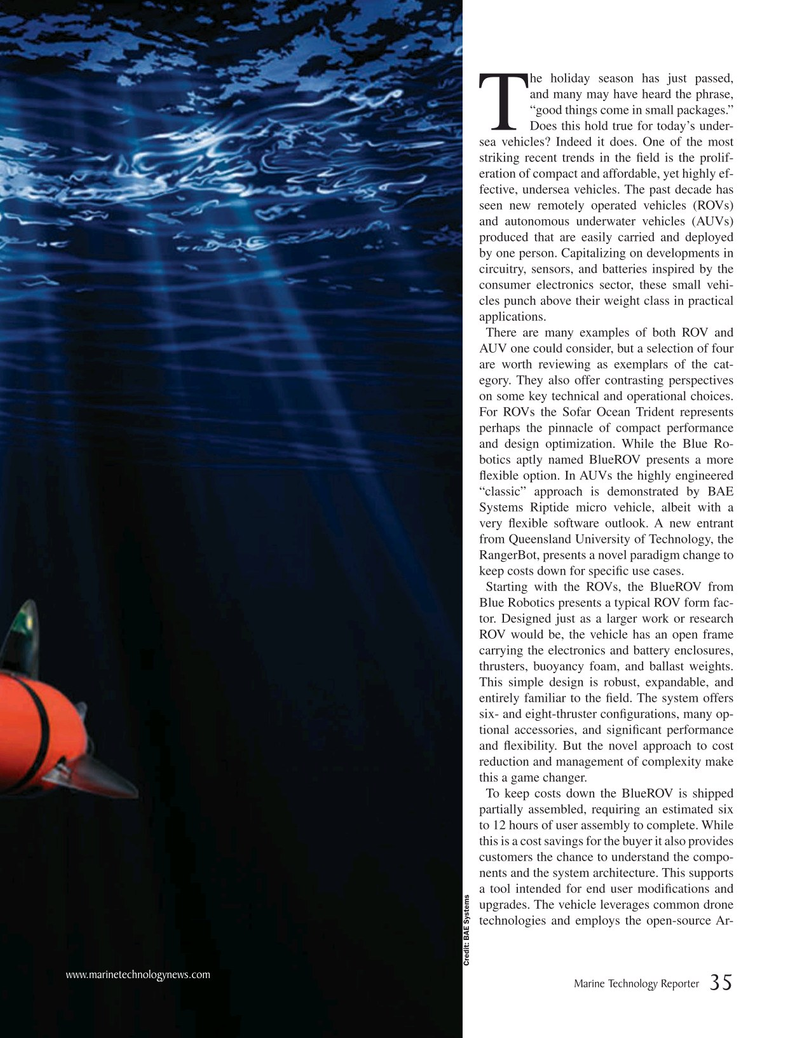
Page 35: of Marine Technology Magazine (January 2020)
Read this page in Pdf, Flash or Html5 edition of January 2020 Marine Technology Magazine
he holiday season has just passed, and many may have heard the phrase, “good things come in small packages.”
TDoes this hold true for today’s under- sea vehicles? Indeed it does. One of the most striking recent trends in the ? eld is the prolif- eration of compact and affordable, yet highly ef- fective, undersea vehicles. The past decade has seen new remotely operated vehicles (ROVs) and autonomous underwater vehicles (AUVs) produced that are easily carried and deployed by one person. Capitalizing on developments in circuitry, sensors, and batteries inspired by the consumer electronics sector, these small vehi- cles punch above their weight class in practical applications.
There are many examples of both ROV and
AUV one could consider, but a selection of four are worth reviewing as exemplars of the cat- egory. They also offer contrasting perspectives on some key technical and operational choices.
For ROVs the Sofar Ocean Trident represents perhaps the pinnacle of compact performance and design optimization. While the Blue Ro- botics aptly named BlueROV presents a more ? exible option. In AUVs the highly engineered “classic” approach is demonstrated by BAE
Systems Riptide micro vehicle, albeit with a very ? exible software outlook. A new entrant from Queensland University of Technology, the
RangerBot, presents a novel paradigm change to keep costs down for speci? c use cases.
Starting with the ROVs, the BlueROV from
Blue Robotics presents a typical ROV form fac- tor. Designed just as a larger work or research
ROV would be, the vehicle has an open frame carrying the electronics and battery enclosures, thrusters, buoyancy foam, and ballast weights.
This simple design is robust, expandable, and entirely familiar to the ? eld. The system offers six- and eight-thruster con? gurations, many op- tional accessories, and signi? cant performance and ? exibility. But the novel approach to cost reduction and management of complexity make this a game changer.
To keep costs down the BlueROV is shipped partially assembled, requiring an estimated six to 12 hours of user assembly to complete. While this is a cost savings for the buyer it also provides customers the chance to understand the compo- nents and the system architecture. This supports a tool intended for end user modi? cations and upgrades. The vehicle leverages common drone technologies and employs the open-source Ar-
Credit: BAE Systems www.marinetechnologynews.com
Marine Technology Reporter 35
MTR #1 (34-49).indd 35 1/16/2020 11:38:00 AM

 34
34

 36
36
